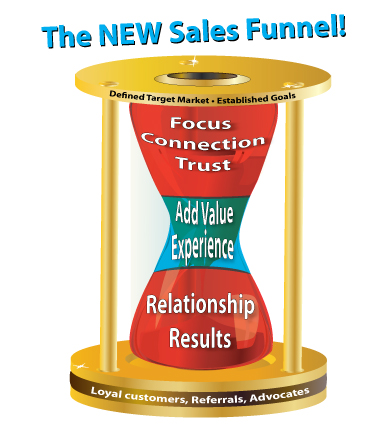In the last two weeks I have visited with four different companies, meet with a number of leaders, only to discover while all have rock solid strategic plans not a single leader has a sales strategy. Not one of these organizations has a plan, a defined way of saying how they are going to acquire new customers, expand existing relationships and sell more products and services.
Oh sure those statements, those goals were part of their overall strategic plan, but there was not one clearly stated strategy of how those goals and sales objectives were going to be met. When I asked the question, do you have a sales strategy; all said yes it is in our strategic plan. But understand that stated sales goals and objectives do not make a sales strategy. When I pointed that out, the question then became why, why do we need a separate sales strategy?
Well, I don’t know if your sales strategy needs to be separate from your strategic plan, but it does need to have its own section and it does need to be detailed. Why? Because sales is the lifeblood of your business, understanding and communicating how you acquire customers and sell products and services, that is key to your success and key to your survival. Without sales you have no cash flow, you have no customers, you have no growth and in essence you have no company.
Because sales is so important, you need to clearly define what you want and need to achieve through sales, what market or customer base you want to go after, what you are going to sell, and then most importantly how you are going to sell it. Being clear not only gets everyone in your company on the same page, it ensures they are focused and clear on what needs to be accomplished, how they are going to accomplish it and why it matters.
In addition, if gives you, as the CEO or leader, a benchmark and a way to see if all the effort your sales teams and associates are investing is making progress. A way to understand if what you’re actively doing is putting you on target to reach your goals, and a way to know when you need to chance course or adjust your strategy. A sales strategy creates the vision, develops the path and provides the numbers and data to ensure objectives and goals are being met. So how do you create an effective sales strategy?
5 Key Steps To Build A Powerful Sales Strategy
#1: Set A Goal
You need to clearly define a sales goal or objective, what you are trying to accomplish and why. With a goal defined, you are clear about what success looks like and you can build the plan to get there. As Steven Covey said, begin with the end in mind. It is not until you know what you want to achieve that you can begin to understand how to get there.
#2: Define Your Target Market
Once you have your goal set, you can turn your attention to your target market. As you look at the products and services you have to sell, the areas of your company in which you want growth, then you can define which types of customers can help you get there. Here is a news flash, not everyone wants to do business with you, and here is another news flash, you do not want to do business with everyone. So use your sales strategy to clearly focus your team on who the right and best customers are, and those most likely to help you achieve your goal.
#3: Create The Path
Next you need to define the path, how you are going to sell, what you are going to sell and who is going to do what. Creating the path is about ensuring everyone on the team understands they are in sales. Defining what their role or position is as it relates to sales and what sales behaviors you expect from them. This leaves no confusion or miscommunication on the table. You and everyone else on your team understands exactly what is being done on a daily basis to achieve your sales goal. The other part of the path is about defining what products you are going to offer and what services you are going to sell.
#4: Embrace Accountability
Key to the sales strategy is to embrace accountability and integrate it deep into your culture. You need to ensure that the sales strategy is being executed and the sales behaviors are being don on a daily basis. Accountability is also about helping people gain the skills and knowledge to be more effective and successful. Accountability is the story of your sales strategy, helping you understand what is working, what is not and giving you the information you need to flex, change and move forward.
#5: Reward & Recognize
And of course, a vital part of your sales strategy is to reward and recognize. Make sure that you are shining the light on the successes that you have, giving extra attention to those that are really going above and beyond, and that you are recognizing any and all efforts that are being made. All too often, as leaders, we are so focused on the goal that we forget to reward the small stuff, the everyday progress our team members are making.
So there you have it, that is basically it! Oh yeah, we can get far more detailed and way more complicated, but when it comes to sales simple is better. A Sales Strategy is key to your success in today’s economy, and the discipline of writing it out, communicating it to your team and holding yourselves accountable to achieve it is your best strategy to ensure you succeed no matter what this economy does.






 prospect has moves in the neck of our new sales funnel and they are “trying you out”, giving you a shot to win their long-term business. The first experience your prospect has with you will determine if this is a one-time transaction or a long-term relationship. If you do it right, if you deliver an amazing experience, your customer/prospect will slip into the base of the funnel. And the base of the funnel is where trust is built and the selling process begins.
prospect has moves in the neck of our new sales funnel and they are “trying you out”, giving you a shot to win their long-term business. The first experience your prospect has with you will determine if this is a one-time transaction or a long-term relationship. If you do it right, if you deliver an amazing experience, your customer/prospect will slip into the base of the funnel. And the base of the funnel is where trust is built and the selling process begins.

